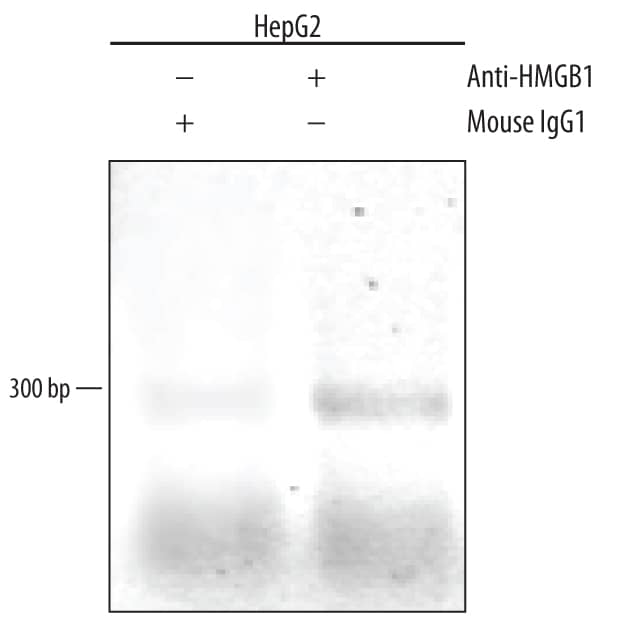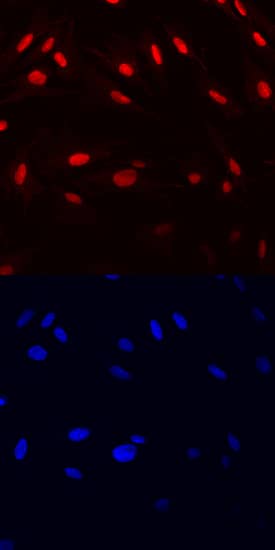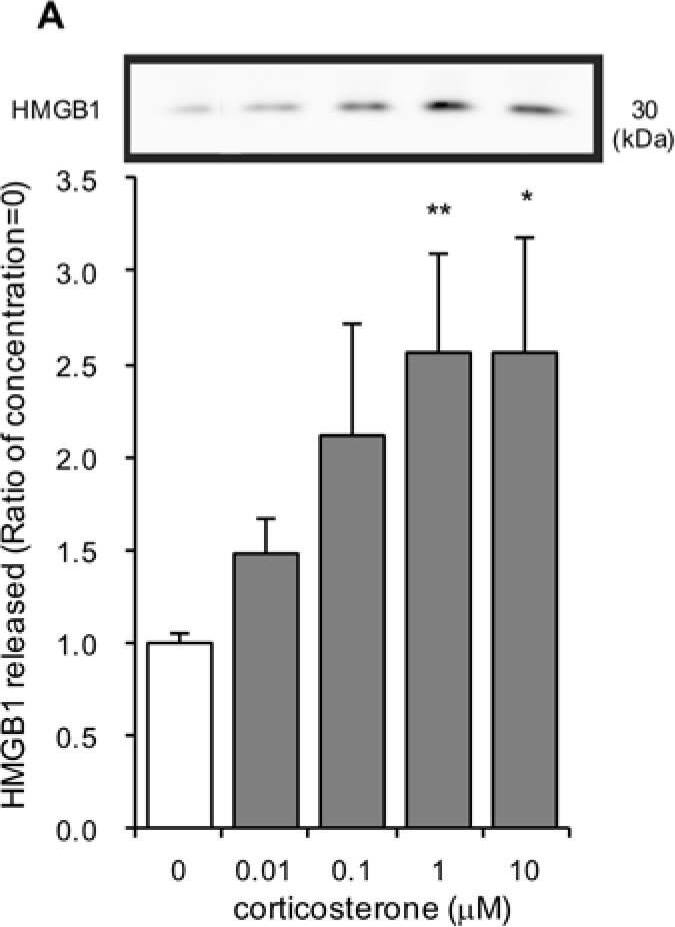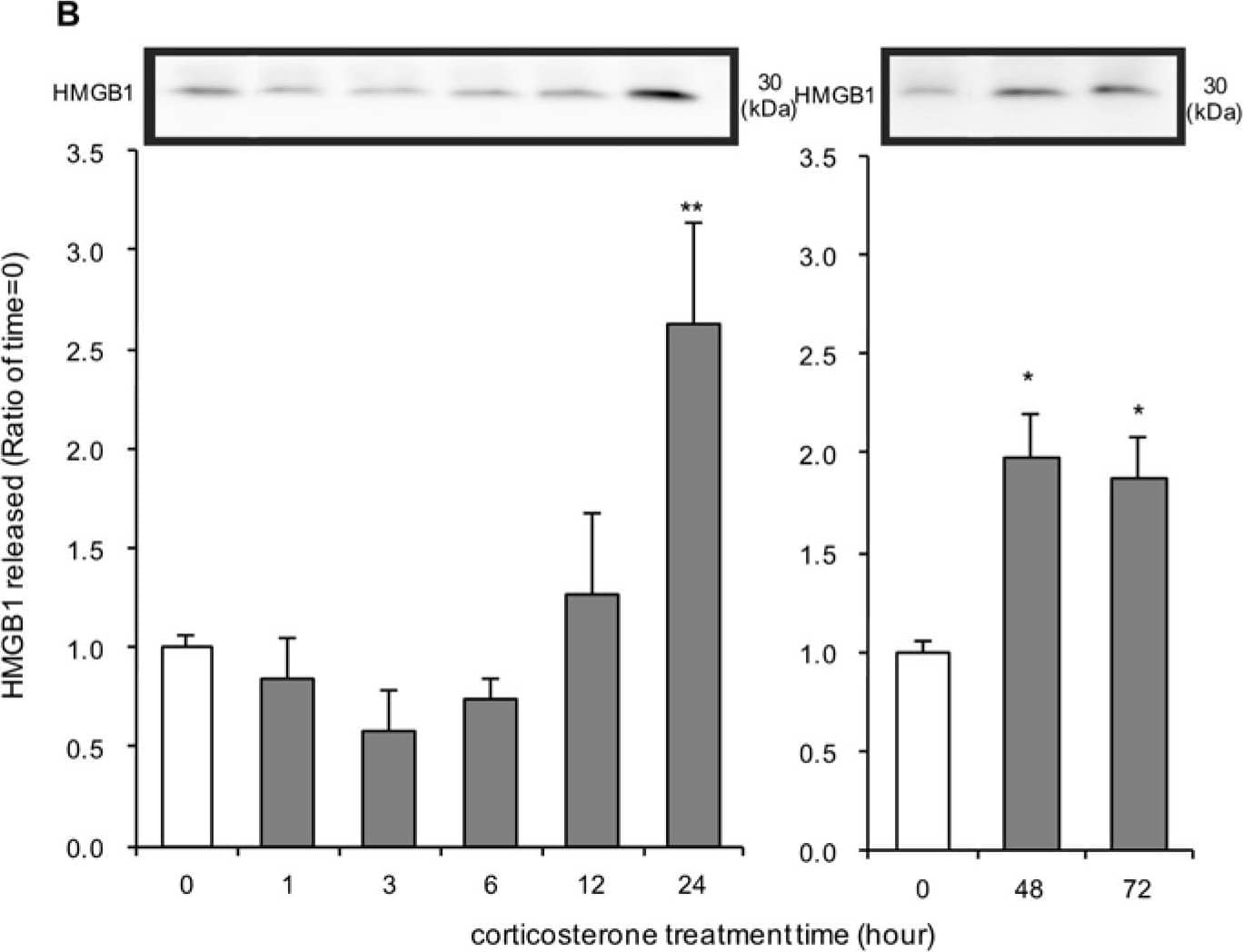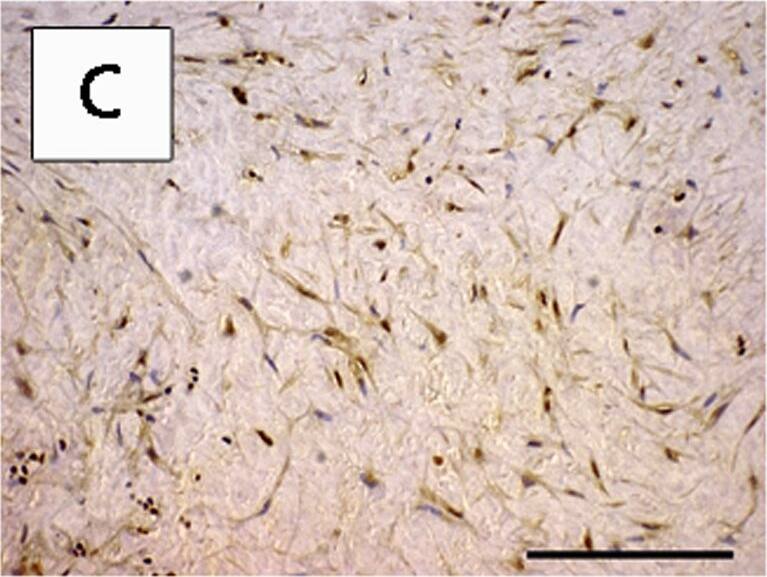Human HMGB1/HMG-1 Antibody
R&D Systems, part of Bio-Techne | Catalog # MAB1690


Key Product Details
Validated by
Species Reactivity
Validated:
Cited:
Applications
Validated:
Cited:
Label
Antibody Source
Product Specifications
Immunogen
Gly2-Glu215 (predicted)
Accession # P09429
Specificity
Clonality
Host
Isotype
Scientific Data Images for Human HMGB1/HMG-1 Antibody
Detection of Human HMGB1/HMG‑1 by Western Blot.
Western blot shows lysates of HepG2 human hepatocellular carcinoma cell line, Jurkat human acute T cell leukemia cell line, and HEK293 human embryonic kidney cell line. PVDF membrane was probed with 0.05 µg/mL of Mouse Anti-Human HMGB1/HMG-1 Monoclonal Antibody (Catalog # MAB1690) followed by HRP-conjugated Anti-Mouse IgG Secondary Antibody (Catalog # HAF018). A specific band was detected for HMGB1/HMG-1 at approximately 26 kDa (as indicated). This experiment was conducted under reducing conditions and using Immunoblot Buffer Group 1.Detection of HMGB1/HMG‑1-regulated Genes by Chromatin Immunoprecipitation.
HepG2 human hepatocellular carcinoma cell line was fixed using formaldehyde, resuspended in lysis buffer, and sonicated to shear chromatin. HMGB1/HMG-1/DNA complexes were immunoprecipitated using 5 µg Mouse Anti-Human HMGB1/HMG-1 PE-conjugated Monoclonal Antibody (Catalog # MAB1690) or control antibody (Catalog # MAB004) for 15 minutes in an ultrasonic bath, followed by Biotinylated Anti-Mouse IgG Secondary Antibody (Catalog # BAF007). Immunocomplexes were captured using 50 µL of MagCellect Streptavidin Ferrofluid (Catalog # MAG999) and DNA was purified using chelating resin solution. TheAFPpromoter was detected by standard PCR.Detection of HMGB1 in HCT‑116 Human Cell Line by Flow Cytometry.
HCT-116 human colorectal carcinoma cell line was stained with Mouse Anti-Human HMGB1/HMG-1 Monoclonal Antibody (Catalog # MAB1690, filled histogram) or isotype control antibody (Catalog # MAB0041, open histogram), followed by Phycoerythrin-conjugated Anti-Mouse IgG F(ab')2Secondary Antibody (Catalog # F0102B). To facilitate intracellular staining, cells were fixed with Flow Cytometry Fixation Buffer (Catalog # FC004) and permeabilized with Flow Cytometry Permeabilization/Wash Buffer I (Catalog # FC005). View our protocol for Staining Intracellular Molecules.Applications for Human HMGB1/HMG-1 Antibody
Chromatin Immunoprecipitation (ChIP)
Sample: HepG2 human hepatocellular carcinoma cell line chromatin, AFP promoter detected by standard PCR
CyTOF-ready
Immunocytochemistry
Sample: Immersion-fixed CCD-18Co human colonic fibroblast cell line and MCF-7 human breast cancer cell line
Immunohistochemistry
Sample: Immersion fixed paraffin-embedded sections of human breast cancer tissue
Intracellular Staining by Flow Cytometry
Sample: HCT‑116 human colorectal carcinoma cell line fixed with Flow Cytometry Fixation Buffer (Catalog # FC004) and permeabilized with Flow Cytometry Permeabilization/Wash Buffer I (Catalog # FC005)
Western Blot
Sample: HepG2 human hepatocellular carcinoma cell line, Jurkat human acute T cell leukemia cell line, and HEK293 human embryonic kidney cell line
Reviewed Applications
Read 3 reviews rated 4.3 using MAB1690 in the following applications:
Formulation, Preparation, and Storage
Purification
Reconstitution
Formulation
Shipping
Stability & Storage
- 12 months from date of receipt, -20 to -70 °C as supplied.
- 1 month, 2 to 8 °C under sterile conditions after reconstitution.
- 6 months, -20 to -70 °C under sterile conditions after reconstitution.
Background: HMGB1/HMG-1
Human High-mobility group box 1 protein (HMGB1), previously known as HMG-1 or amphoterin, is a member of the high mobility group box family of non-histone chromosomal proteins (1‑3). Human HMGB1 is expressed as a 30 kDa, 215 amino acid (aa) single chain polypeptide containing three domains: two N-terminal globular, 70 aa positively charged DNA-binding domains (HMG boxes A and B), and a negatively charged 30 aa C-terminal region that contains only Asp and Glu (4, 5). Residues 27‑43 and 178‑184 contain a NLS. Posttranslational modifications of the molecule have been reported, with acetylation occurring on as many as 17 lysine residues (6). HMGB1 is expressed at high levels in almost all cells (2, 4). It was originally discovered as a nuclear protein that could bend DNA. Such bending stabilizes nucleosome formation and regulates the expression of select genes upon recruitment by DNA binding proteins (1, 7, 8). It is now known that HMGB1 can also act extracellularly, both as an inflammatory mediator that promotes monocyte migration and cytokine secretion, and as a mediator of T cell-dendritic cell interaction (1, 4, 7, 9, 10). The cytokine activity of HBMG1 is restricted to the HMG B box, (3) while the A box is associated with the helix-loop-helix domain of transcription factors (11). HMBG1 is released in response to cell death and as a secretion product. Although HMBG-1 does not possess a classic signal sequence, it appears to be secreted as an acetylated form via secretory endolysosome exocytosis (6, 12). Once secreted, HMGB1 transduces cellular signals through its high affinity receptor, RAGE and, possibly, TLR2 and TLR4 (1, 3, 4). Human HMGB1 is 100% aa identical to canine HMGB1 and 99% aa identical to mouse, rat, bovine and porcine HMGB1, respectively.
References
- Lotze, M.T. and K.J. Tracey (2005) Nat. Rev. Immunol. 5:331.
- Yang, H. et al. (2005) J. Leukoc. Biol. 78:1.
- Dumitriu, I.E. et al. (2005) Trends Immunol. 26:381.
- Degryse, B. and M. de Virgilio (2003) FEBS Lett. 553:11.
- Wen, L. et al. (1989) Nucleic Acids Res. 17:1197.
- Bonaldi, T. et al. (2003) EMBO J. 22:5551.
- Muller, S. et al. (2001) EMBO J. 20:4337.
- Bustin, M. (1999) Mol. Cell. Biol. 19:5237.
- Wang, H. et al. (1999) Science. 285:248.
- Dimitriu, I.E. et al. (2005) J. Immunol. 174:7506.
- Najima, Y. et al. (2005) J. Biol. Chem. 280:27523.
- Gardella, S. et al. (2002) EMBO Rep. 3:995.
Long Name
Alternate Names
Entrez Gene IDs
Gene Symbol
UniProt
Additional HMGB1/HMG-1 Products
Product Documents for Human HMGB1/HMG-1 Antibody
Product Specific Notices for Human HMGB1/HMG-1 Antibody
For research use only
